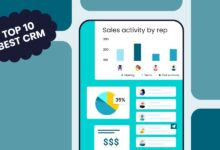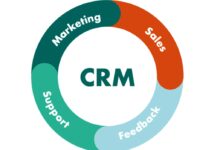B2B Companies: 7 Powerful Strategies to Dominate the Market
Welcome to the world of B2B companies—where relationships, strategy, and long-term value rule the game. If you’re looking to understand how these powerhouses operate and grow, you’re in the right place.
What Are B2B Companies and Why They Matter

B2B companies, or business-to-business companies, are organizations that sell products or services to other businesses rather than to individual consumers. This model forms the backbone of global commerce, fueling innovation, supply chains, and economic growth.
Defining the B2B Business Model
The core of B2B companies lies in their transactional relationships between businesses. Unlike B2C (business-to-consumer) models that focus on emotional appeal and quick sales, B2B transactions are typically longer, more complex, and based on logic, ROI, and strategic alignment.
- B2B companies often sell raw materials, software, machinery, or professional services.
- Examples include Salesforce (SaaS), Intel (semiconductors), and McKinsey & Company (consulting).
- Transactions usually involve contracts, negotiations, and multi-stakeholder decision-making.
“B2B is not just about selling—it’s about solving business problems at scale.” — Harvard Business Review
Key Differences Between B2B and B2C
Understanding the distinction between B2B and B2C is crucial for anyone navigating the corporate landscape. While both models aim to generate revenue, their approaches differ significantly.
- Audience: B2B targets professionals and decision-makers; B2C targets end consumers.
- Sales Cycle: B2B sales cycles are longer, often lasting weeks or months; B2C is typically immediate.
- Pricing: B2B pricing is often customized and negotiated; B2C is usually fixed and transparent.
- Marketing: B2B relies on content marketing, LinkedIn outreach, and whitepapers; B2C uses social media ads and emotional branding.
For deeper insights, check out Investopedia’s guide on B2B.
The Evolution of B2B Companies Over Time
B2B companies have undergone a dramatic transformation over the past century, evolving from traditional wholesalers to digital-first enterprises leveraging AI and data analytics.
From Industrial Roots to Digital Transformation
In the early 20th century, B2B companies were primarily industrial suppliers—think steel manufacturers, textile mills, and logistics firms. These businesses operated on physical catalogs, phone calls, and face-to-face meetings.
- The rise of ERP systems in the 1990s allowed better inventory and supply chain management.
- E-commerce platforms like Alibaba (founded in 1999) revolutionized how B2B companies connect globally.
- Today, digital marketplaces and SaaS platforms dominate B2B interactions.
According to McKinsey & Company, over 70% of B2B buyers now prefer digital self-service options.
The Role of Technology in Modern B2B Operations
Technology has become the engine driving efficiency, scalability, and customer experience in B2B companies.
- CRM Systems: Tools like HubSpot and Salesforce help manage client relationships and track sales pipelines.
- AI and Automation: Chatbots, predictive analytics, and automated quoting streamline operations.
- Data Analytics: B2B companies use data to personalize offerings and forecast demand.
“The future of B2B isn’t just digital—it’s intelligent.” — Gartner
Top Industries Dominated by B2B Companies
B2B companies span a wide range of sectors, each with unique challenges and opportunities. Let’s explore the industries where B2B models thrive.
Information Technology and SaaS
The IT and Software-as-a-Service (SaaS) sector is one of the fastest-growing areas for B2B companies. These firms provide essential tools that power modern businesses.
- Examples: Microsoft Azure, Slack, Zoom, and Adobe Creative Cloud.
- Revenue models include subscriptions, licensing, and usage-based pricing.
- Customer success teams play a critical role in retention and upselling.
For a comprehensive list of top SaaS B2B companies, visit Forbes’ SaaS Leaders.
Manufacturing and Industrial Supply
Manufacturing remains a cornerstone of the B2B economy. These companies produce components, machinery, and materials used in other production processes.
- Key players: General Electric, Siemens, and Caterpillar.
- Supply chain resilience is a top priority, especially post-pandemic.
- Many are adopting Industry 4.0 technologies like IoT and smart factories.
“In manufacturing, B2B isn’t just a model—it’s a necessity.” — Deloitte Insights
Professional Services and Consulting
B2B companies in the professional services space offer expertise in areas like finance, legal, HR, and strategy.
- Firms like PwC, Deloitte, and Accenture serve global corporations.
- Value is measured in outcomes, not just deliverables.
- Trust and reputation are critical differentiators.
These companies often rely on thought leadership and case studies to attract clients.
How B2B Companies Generate Revenue
Understanding the revenue mechanics of B2B companies is essential for anyone looking to enter or analyze this space. Unlike B2C, where revenue comes from volume, B2B focuses on high-value, long-term contracts.
Subscription and Licensing Models
One of the most popular revenue streams for modern B2B companies is the subscription model, especially in software and digital services.
- Recurring revenue provides predictability and stability.
- Annual contracts with auto-renewal clauses increase customer lifetime value (CLTV).
- Licensing fees for enterprise software can reach millions per deal.
For example, Oracle charges enterprises six- to seven-figure sums for database licenses.
Project-Based and Consulting Fees
Many B2B companies, especially in consulting and engineering, charge based on projects or time spent.
- Fixed-fee projects offer clarity for both parties.
- Hourly billing is common in legal and IT services.
- Value-based pricing is emerging, where fees are tied to business outcomes.
“The best B2B pricing aligns the vendor’s success with the client’s success.” — Harvard Business Review
Wholesale and Distribution Margins
Traditional B2B companies in retail, logistics, and manufacturing earn profits through wholesale margins.
- They buy in bulk from producers and sell to retailers or other businesses.
- Profit margins are often thin, so scale is crucial.
- Digital platforms like Faire and Tundra are modernizing wholesale B2B.
Learn more about wholesale B2B trends at NFIB’s Wholesale Report.
The Sales Funnel in B2B Companies
The B2B sales funnel is longer and more complex than its B2C counterpart. It involves multiple stages, stakeholders, and touchpoints.
Awareness and Lead Generation
The first stage is about attracting potential clients who may not yet know they need your solution.
- Content marketing (blogs, webinars, whitepapers) drives organic traffic.
- LinkedIn ads and Google Search campaigns target decision-makers.
- Trade shows and industry events remain effective for networking.
B2B companies invest heavily in SEO and thought leadership to build authority.
Consideration and Nurturing
Once leads are captured, the nurturing phase begins. This is where trust and credibility are built.
- Email drip campaigns provide value over time.
- Demos and free trials help prospects experience the product.
- Sales reps engage in consultative conversations to understand pain points.
“In B2B, you don’t close deals—you earn them.” — Sales Hacker
Decision and Closing
The final stage involves negotiation, approval, and contract signing.
- Multiple stakeholders (CFO, CTO, procurement) may be involved.
- Legal and compliance teams review contracts.
- Discounts, SLAs, and onboarding plans are negotiated.
Tools like DocuSign and PandaDoc streamline the closing process.
Marketing Strategies That Work for B2B Companies
Effective marketing in the B2B space requires a strategic, data-driven approach focused on building relationships and demonstrating value.
Content Marketing and Thought Leadership
Content is king in B2B marketing. High-quality, educational content positions companies as industry leaders.
- Whitepapers, case studies, and research reports generate qualified leads.
- Webinars and podcasts engage niche audiences.
- SEO-optimized blogs improve visibility and credibility.
For example, HubSpot’s blog drives millions of visits monthly, fueling its lead engine.
Account-Based Marketing (ABM)
ABM is a targeted strategy where marketing and sales teams collaborate to pursue high-value accounts.
- Personalized campaigns are created for specific companies.
- Direct mail, custom demos, and executive outreach are common tactics.
- ABM can increase deal size and shorten sales cycles.
According to ABM Leadership Board, 87% of marketers report higher ROI from ABM than other marketing strategies.
Social Selling and LinkedIn Engagement
Social selling—especially on LinkedIn—is a powerful tool for B2B companies.
- Sales reps build personal brands by sharing insights and engaging with prospects.
- Direct messaging and content sharing foster relationships.
- LinkedIn Sales Navigator helps identify and track decision-makers.
“Social selling isn’t about spamming—it’s about adding value before the sale.” — LinkedIn Sales Solutions
Challenges Facing B2B Companies Today
Despite their strengths, B2B companies face numerous challenges in an increasingly competitive and digital world.
Long Sales Cycles and Decision Fatigue
One of the biggest hurdles is the extended sales cycle, which can last 6–12 months or more.
- Multiple stakeholders delay decisions.
- Procurement processes are often bureaucratic.
- Buyers may suffer from decision fatigue due to too many options.
Solution: Streamline demos, provide clear ROI calculators, and assign dedicated account managers.
Customer Retention and Churn
Acquiring a new B2B customer can cost 5–7x more than retaining an existing one.
- Poor onboarding leads to early churn.
- Lack of ongoing support reduces satisfaction.
- Competitors offer better pricing or features.
B2B companies must invest in customer success teams and proactive engagement.
Digital Transformation Pressure
Legacy B2B companies struggle to keep up with digital-native competitors.
- Outdated systems hinder agility.
- Employees resist change.
- Investment in tech can be costly.
However, digital transformation is no longer optional—it’s essential for survival.
Future Trends Shaping B2B Companies
The future of B2B is being reshaped by innovation, globalization, and changing buyer expectations.
AI and Predictive Analytics in B2B
Artificial intelligence is revolutionizing how B2B companies operate.
- AI-powered chatbots handle initial inquiries 24/7.
- Predictive analytics forecast customer churn and upsell opportunities.
- Machine learning optimizes pricing and inventory.
Companies like Salesforce Einstein and IBM Watson are leading this charge.
The Rise of E-Procurement and Digital Marketplaces
Digital procurement platforms are streamlining how businesses buy from each other.
- Platforms like Coupa and Ariba automate purchasing and invoicing.
- B2B marketplaces like Amazon Business offer one-stop shopping.
- Transparency and speed are improving buyer satisfaction.
“The B2B buyer of tomorrow expects the ease of Amazon with the depth of enterprise solutions.” — McKinsey
Sustainability and Ethical Sourcing
More B2B companies are prioritizing sustainability in their operations and supply chains.
- Buyers demand eco-friendly materials and ethical labor practices.
- Carbon footprint tracking is becoming standard.
- Sustainable brands gain competitive advantage and loyalty.
For example, Unilever’s Sustainable Living Plan has influenced its B2B partnerships.
What are B2B companies?
B2B companies, or business-to-business companies, are organizations that sell products or services to other businesses rather than to individual consumers. Examples include software providers, manufacturers, and consulting firms.
How do B2B companies make money?
B2B companies generate revenue through various models such as subscriptions, licensing fees, project-based consulting, and wholesale distribution. Their pricing is often customized based on client needs and contract terms.
What is the difference between B2B and B2C?
B2B involves transactions between businesses, with longer sales cycles and logical decision-making. B2C sells directly to consumers, focusing on emotional appeal and faster purchases.
What are the best marketing strategies for B2B companies?
Effective B2B marketing includes content marketing, account-based marketing (ABM), social selling on LinkedIn, and thought leadership through webinars and whitepapers.
What challenges do B2B companies face?
Common challenges include long sales cycles, customer retention, digital transformation pressure, and increasing competition from tech-savvy startups.
The world of B2B companies is dynamic, complex, and full of opportunity. From their foundational role in global supply chains to their embrace of cutting-edge technology, these organizations are the engines of modern commerce. Whether you’re building, selling to, or partnering with B2B companies, understanding their structure, strategies, and challenges is key to success. As digital transformation accelerates and buyer expectations evolve, the most resilient B2B companies will be those that prioritize value, relationships, and innovation. The future belongs to those who adapt, connect, and deliver results—not just products.
Further Reading:





